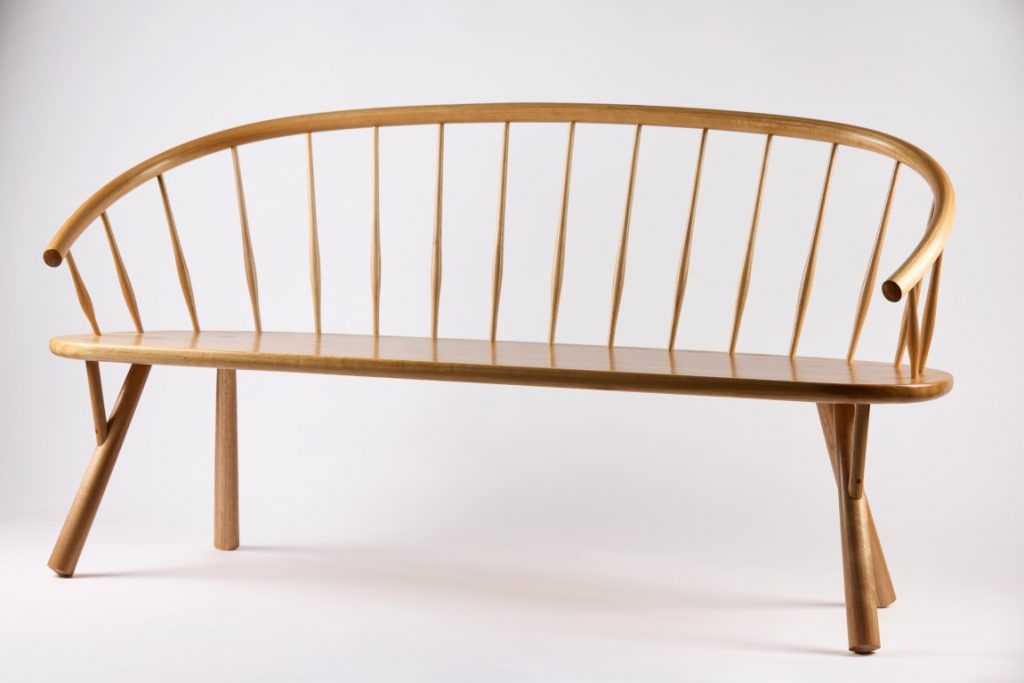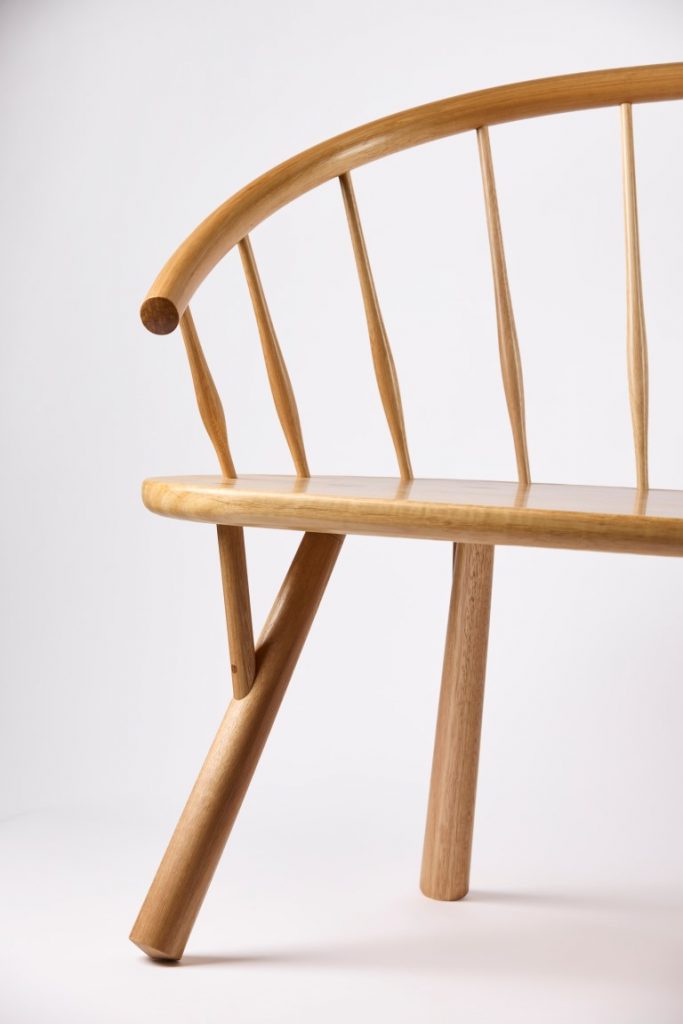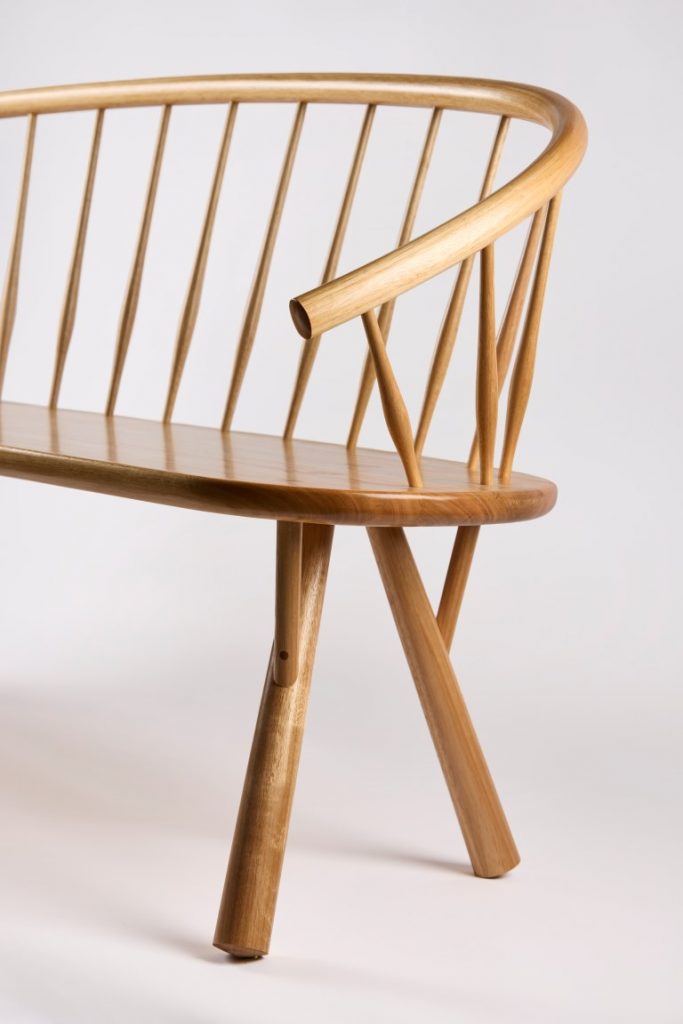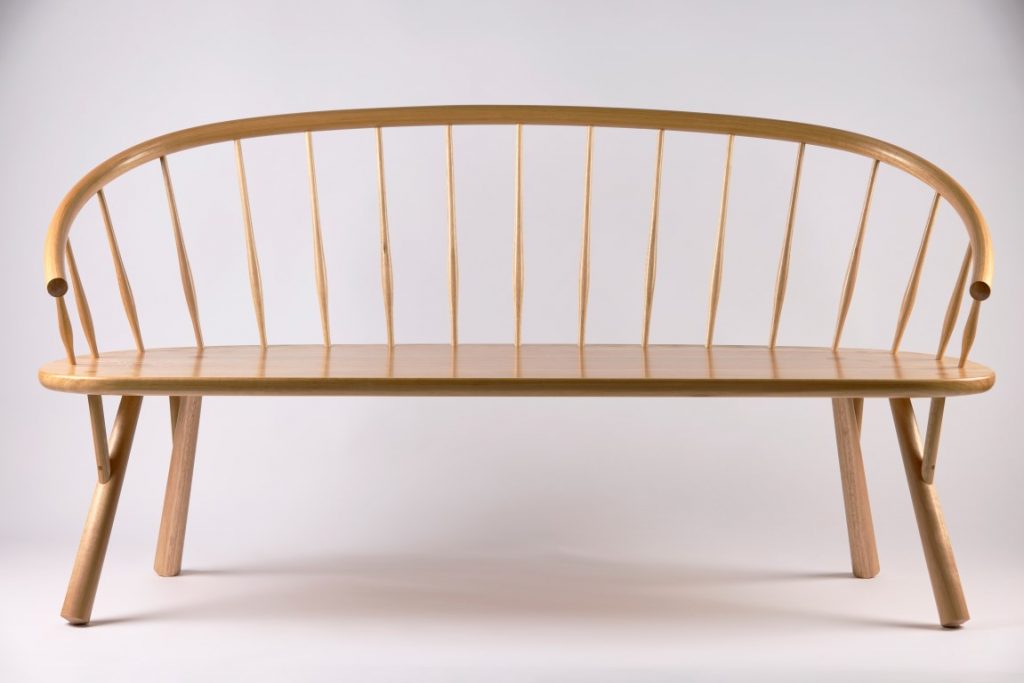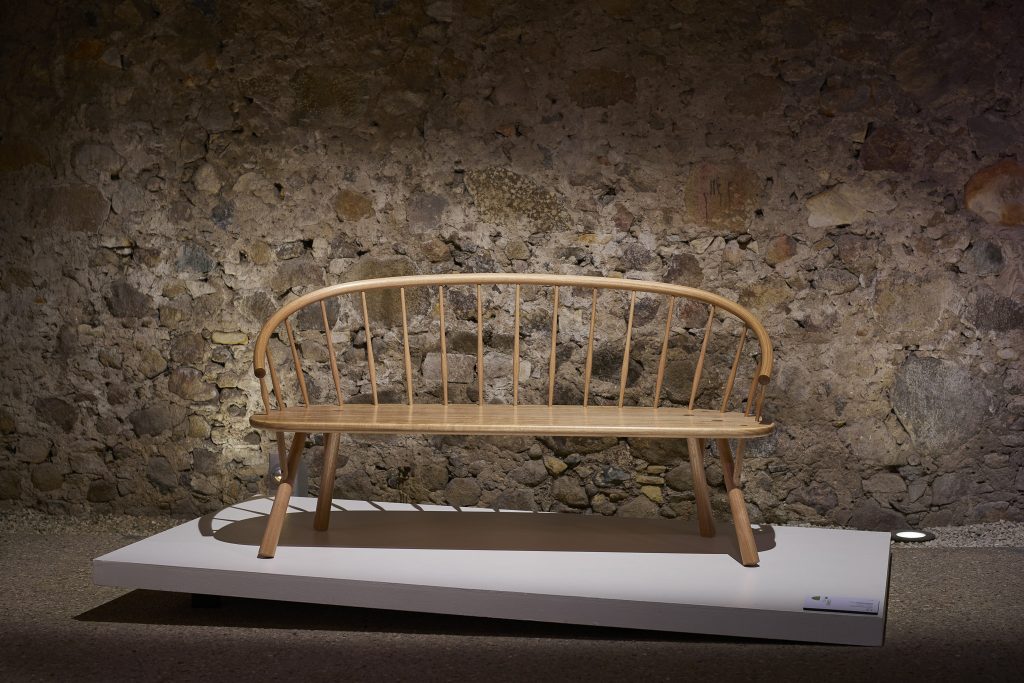
The vernacular of colonial Tasmanian design draws from the historical overlap of rural ingenuity, furniture making and boat building techniques. The Possum Lounge is the result of a collaboration formed to honor the legacy of Tasmanian Design that is exemplified by Jimmy Possum. The appeal of Jimmy Possum furniture is in the simple elegance that is remarkably functional, and quintessentially Tasmanian. Mystery surrounds the true identity of the furniture maker from Tasmania’s North West, who appears to have shared the craft with other local makers, resulting in numerous similar pieces from the region.
There are distinguishing design features that characterise the pieces attributed to Jimmy Possum differentiating them from contemporary designs and the Windsor style chairs that were common at the turn of the 20th century. The ingenious locking leg that triangulates delivering remarkable strength is one such feature that appeals to Dr Phillip Blacklow and Sara Lindsay who have collaborated to create the Possum Lounge. These locking legs use Trennels (Tree Nails) to locate the legs in place, a method of construction that has been in use in boatbuilding since the first century AD.
The use of Plantation Eucalypt for this work is informed through Dr Phillip Blacklow’s research into the use of plantation eucalypt in fine furniture and supports an ethos of sustainability by adding value to timber that would otherwise become pulp. Early colonial furniture makers of European origins often preferred working with more familiar imported timbers that were also palatable to colonial settlers’ tastes. Makers such as Jimmy Possum that travelled with a kit of hand tools were more inclined to use local timbers, and his chairs exemplify the first use of Blue Gum (E. globulus) the floral emblem of Tasmania in furniture. The Possum Lounge honors the legacy of Tasmanian design and showcases the hidden value of the humble Blue Gum’s subtle grain structures that become richer with age.
Images by Remi Chauvin & Clarence City Council

